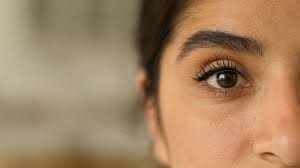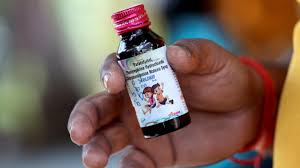October 9, 2025 – As the world celebrates World Sight Day 2025, ophthalmologists, optometrists and health advocates are sounding the alarm on the increasing burden of visual impairment and stressing the importance of regular eye checkups and preventive care. With the theme “Love Your Eyes”, this year’s celebration aims to promote awareness that protecting vision is not just a matter of seeing clearly – it is essential for overall health, productivity and quality of life.
Vision as a window to health
Doctors often point out that the eyes often reveal a wide range of health conditions. “When we examine the retina, we can directly see small blood vessels,” says Dr. Prateek Gogri (Cornea and Anterior Segment Surgeon at Dr. Aggarwal Eye Hospital). “Changes in those vessels can indicate early diabetes, high blood pressure or cholesterol issues – sometimes before patients even know they have the disease
Ophthalmologists Dr. Pooja Prabhu and Dr. Sushmita Sriganesh also emphasize that comprehensive eye exams go far beyond checking for refractive errors – they can detect signs of glaucoma, cataracts, retinal degeneration, optic nerve issues and systemic diseases.
Therefore, doctors are urging people to take eye exams not just as a vision checkup, but as a health checkup.
Increasing digital pressure, increasing risk
In an age defined by screens, digital eye strain is emerging as a common complaint across all age groups. Excessive screen time – smartphones, tablets, laptops – is linked to symptoms like dry eyes, blurred vision, headaches and fatigue.
Experts caution that in children, prolonged “near work” (reading, screens, writing) without breaks or adequate outdoor time can accelerate the progression of myopia (nearsightedness).
Doctors recommend using the 20-20-20 rule (every 20 minutes, look at something 20 feet away for 20 seconds), regular blinking, adjusting screen brightness and posture, and ensuring breaks to limit the strain.
The Burden of Preventable Sight Loss
Globally, at least 2.2 billion people live with some form of vision impairment, of which around 1 billion cases could have been prevented or remain untreated.
In India, the scale is stark — reports estimate that about 70 crore people (700 million) may live with avoidable vision loss.
A recent analysis also reveals that every rupee invested in eye health infrastructure yields a high return: simple interventions like sight tests, cataract surgery, and spectacle distribution produce substantial economic gains in productivity, education, and reduced care burden.
Given this, doctors argue that expanding screening programs, especially in rural and underserved regions, must be a priority.
Screening: The First Line of Defense
On World Sight Day, many eye hospitals, NGOs, and public health agencies host free vision camps, mobile screening units, and school eye checkups.
According to Dr. Prabhu and Dr. Sriganesh, timely screening is the key to early detection — many eye diseases are silent until advanced. For example, glaucoma causes irreversible damage but often presents no symptoms until late
Similarly, diabetic retinopathy (damage to the retina from diabetes) is one of the leading causes of adult blindness. With India’s massive diabetic population, experts emphasize integrating retina screening with diabetes management programs.
Emerging technologies, including AI-based screening tools, are being validated to detect retinal disease earlier, even in resource-limited settings. A multicentre Indian study found that an AI tool (AIDRSS) achieved a sensitivity of 92% and specificity of 88% in detecting referable diabetic retinopathy — a promising step toward scalable screening
Doctors also stress that eye screening must reach primary care settings: equipping basic health centers with fundus cameras, training personnel, and linking them with tertiary centers for referrals.
Barriers, Misbeliefs, and the Road Ahead
Despite the evidence, certain myths and barriers persist. One pervasive belief is that breast milk can treat infant eye infections — health experts reject this, citing hygiene risks and danger of worsening infections.
Another challenge is self-diagnosis via internet search. Dr. Rashmi, a consultant ophthalmologist, warns that while online resources may help raise awareness, they must never replace professional diagnosis.
Access and affordability remain obstacles, especially in rural or impoverished areas. Many people delay care until vision loss becomes severe. Doctors call for stronger government commitment to equitable vision services and public awareness campaigns.
Moreover, the eye health workforce must be scaled up — more optometrists, ophthalmic assistants, and retina specialists. Innovation in portable devices, telemedicine, AI screening, and referral systems can help bridge gaps.
Voices from the Field
At a city hospital screening camp organized for World Sight Day, Dr. Manoj Kumar (ophthalmologist) remarked, “We see dozens of patients who thought they just needed new glasses — but screening reveals early cataracts, glaucoma, or retinal changes. Early treatment can preserve vision for years.”
A school eye check in a rural district identified over 50 children needing spectacles. The local optometrist, Ms. Priya Sharma, said, “Many parents had no idea that blurred reading or squinting was a serious issue; they just assumed their child was lazy. Today’s screening gives them clarity — literally and figuratively.”
Community NGOs, too, are active. Vision outreach groups are conducting door-to-door awareness drives, distributing leaflets, and coordinating with local health centers.
Call to Action: Love Your Eyes
Doctors across India have urged everyone to heed three main messages this World Sight Day:
- Schedule an eye exam – Even if you’re feeling fine, annual or biennial checkups are important, especially after age 40, or earlier if you have risk factors (diabetes, high blood pressure, family history).
- Adopt healthy eye habits – follow the 20-20-20 rule, reduce continuous screen time, increase outdoor breaks (especially for children), maintain hydration, blink frequently, use appropriate lighting and wear UV-protective sunglasses outside.
- Advocacy and support outreach – supporting efforts to bring eye care to underserved areas, calling for integrated screening into primary health care, and dispelling myths about eye care
As the IAPB notes, World Sight Day 2025 invites worldwide participation under the #LoveYourEyes campaign – a call to make eye care accessible, available and affordable everywhere
In the Indian context, the challenge is huge, but so is the opportunity: a combination of technology, awareness, public policy and medical outreach can change the vision of millions of people. On this day, ophthalmologists and public health experts hope that vision will become a national priority not just for those with problems, but for everyone.













